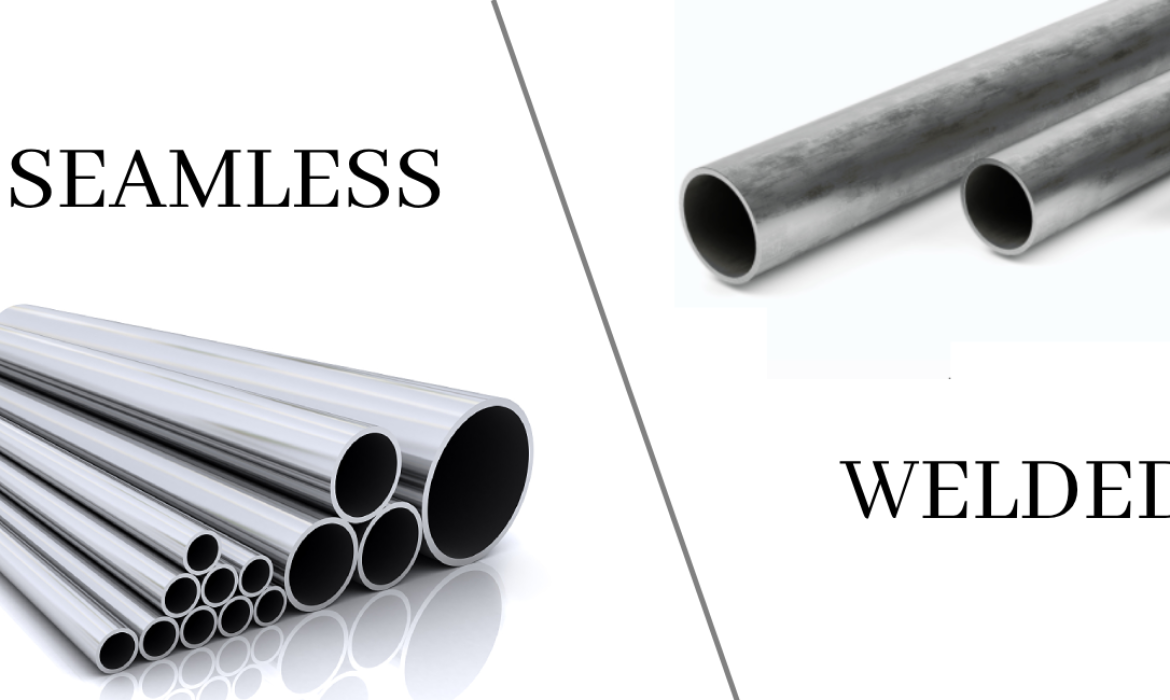
Stainless steel pipe & tube have critical applications in various businesses and industries, ranging from construction to engineering, pharmaceuticals, and petrochemicals. They come in two primary shapes i.e welded and seamless, each having interesting qualities, benefits, and utilizations. Welded pipes are accessible at a more conservative cost. They are favoured for low to medium-pressure applications while, on the other hand, seamless pipes are required to handle high-pressure conditions with expanded quality and reliability. The article provides a comprehensive comparison between these two pipes and tubes and shares all data approximately to assist you in making suitable choices for your projects.
Seamless Variant
Seamless Stainless Steel Pipe & Tube is crafted from a strong steel billet to create a hollow structure. In this method, no welding is used. They are comparatively stronger and more resistant to pressure and corrosion.
They are used in high-pressure applications, for example, the oil and gas industries, power generation, and chemical processing. Without the weld seam, they are reliable for higher pressure and critical applications in which there are minimum chances of leakage.
Welded Variant
Welded Stainless Steel Pipe & Tube is made by rolling a plane plate into a tube and welding the crease closed. This process has the great advantage of being able to produce a pipe in long, continuous lengths. The fabricating price of welded pipe is usually lower than that of seamless ones due to the ease and convenience of the making process.
The major benefit of welded pipes is their cost-effectiveness. They are ideal for applications where high pressure is not a concern. Industries like construction, architecture and water transportation usually use welded stainless steel pipe & tube because they are available in large sizes and lengths.
Comparative Strength and Durability
Compared to the strength and resistance of welded and seamless pipes, seamless pipes usually have an advantage because of their manufacturing process. To this end, a solid billet is extruded into a hollow form; thus, no weld seam exists, which is almost invariably the weak point in welded pipes. Therefore, seamless pipes are usually stronger and more resistant to pressure and corrosion. It makes them particularly useful in high-pressure applications, like within the petroleum and natural gas industries and businesses.
Innovations in welding technology have achieved massive upgrades in the quality of welded stainless steel pipes and tubes. The joints can be made equally strong with the rest of the pipe, and therefore, they are very useful in terms of overall strength. This improvement has narrowed the perforation gap between welded and seamless pipes, making options of the welded pipe much more reliable for quite several applications.
Cost Considerations
One of the most important parameters in selecting either a welded or seamless pipe is cost. Welded pipes are cheaper because of the easy and not-so-labour-intensive production process. In works where budget dictates the choice, welded stainless steel Pipe and tube becomes more popular.
Although costlier than other pipes, seamless pipes have better strength and durability. In applications with vital reliability and safety concerns, the additional cost for seamless stainless steel pipe and tube is warranted.
Applications and Uses
Welded and Seamless pipes are used significantly in various industries, and both have requirements. Welded pipes are used dramatically in construction industries, and architectural, water, and sewage systems because they perform exemplary in low to medium pressures. These pipes are cheap and easy to produce. On the other hand, seamless pipes are mainly useful in higher-demand industries like the oil and gas sector, chemical processing, and petrochemical fields that require high-pressure resistance and ultimate strength.
Thus, both sorts of pipes and tubes have different applications concerning an informed recognition of the necessities of a given project and ensuring that the chosen material meets the execution, safety, and long-lasting criteria expected from it.
Manufacturing Processes
The fabrication processes for welded pipes and seamless pipes are quite distinctive, and each is utilized for special pipes with varying characteristics. Welded pipes are fabricated by rolling plane steel plates into a round and hollow shape, after which the edges are joined together by a welding procedure. This method is productive and cost-effective, particularly for making large-diameter pipes.
In contrast, seamless pipes are manufactured through an extrusion process, whereby a solid steel billet is heated prior to becoming pliable and is then forced through a die to create a hollow tube. Subsequently, through the stretching and shaping process to get its dimensions, such a pipe contains no welded edges, thus giving superior strength and uniformity.
Significantly, quality controls within both processes ensure that the pipes, manufactured using the respective methods, meet stringent industry standards to deliver adequately in numerous applications, ranging from construction to high-pressure environments.
Endnote
In the end, the choice of welded and seamless stainless steel pipes and tubes depends on many factors. This includes individual demands for use, budget, and performance expectancy. Welded pipes and tubes offer cost-effective solutions for many applications, while seamless offers superior strength and reliability needed in high-pressure environments.
By knowing what makes each different in manufacturing processes, strengths, and applications, you will be better equipped to make the right choice that aligns with your project needs. Whether you go for welded or seamless, both types of stainless steel pipes and tubes give distinct advantages that serve a wide array of industrial requirements.
Read More From C-incognito



